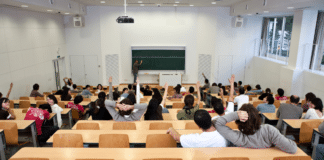A new report reveals that 90% of American college students are using artificial intelligence tools for academic work. This surge, spanning all ages and institutions, is triggering growing concern over the future of higher education, academic honesty, and the erosion of personal responsibility in learning.
The findings come from the 2025 AI in Education Trends Report by Copyleaks, based on responses from more than 1,100 students enrolled in two-year colleges, four-year universities, and graduate programs. Nearly all respondents admitted to using AI for tasks like brainstorming, generating outlines, clarifying difficult topics, and even writing assignments.
Usage is not slowing. Three out of four students reported that their use of AI increased over the past year. These results were mirrored by international data, where 86% of students across 16 countries reported using AI for schoolwork. At Harvard University, nearly 9 in 10 students admitted to using generative AI on coursework.
Contrary to expectations, younger students are not the primary users. The report shows 44% of student AI users are between ages 45 and 60. Students ages 30 to 44 made up 27%, while only 29% of users fell between 18 and 29 years old. The data suggest that older, nontraditional students are adopting AI at the highest rates, likely seeking efficiency in balancing school with work and family responsibilities.
The growing dependence on AI raises serious academic and moral issues. As AI tools generate more of students’ written output, universities face pressure to redefine honor codes, enforce academic standards, and teach proper AI usage. Without clear boundaries, students may increasingly outsource thinking and learning to machines.
AI’s rapid spread within academia has outpaced institutional policy. Some schools encourage AI literacy, while others are banning or limiting use, often without consistent enforcement. In the absence of clear leadership, students are setting their own standards—many of which blur ethical lines.


